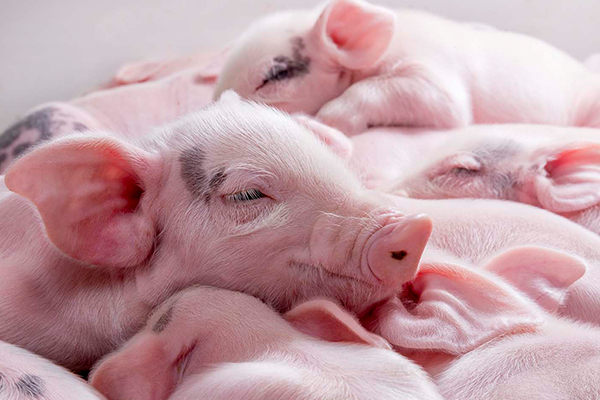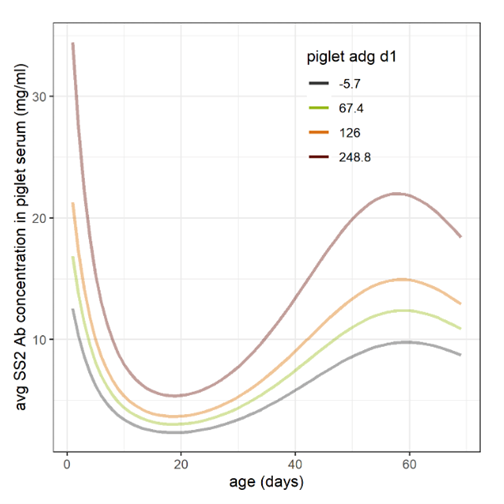Fighting together against streptococcus: With these 4 prevention pillars, you stand strong!
- Swine
Streptococcus is one of the most common pathogens in piglets. Almost every pig farmer has had to deal with them at some point and knows that these terrible disease-causing bacteria are certainly no fun... From severe meningitis to pneumonia and even heart failure. Did you know that in severe streptococcal outbreaks, mortality rates were as high as 20%? We share this and other insights from a 4-year study with you in this article.

Important factors involved
Streptococcus bacteria gather on the tonsils (tonsils) and lie low there for a while at first. Is there poor stall hygiene or stress? Or is there a co-infection such as E.coli, a flu virus or PRRS lurking? Then they spring into action and strike mercilessly. So in the emergence of streptococci, several factors play a role.
Fighting Streptococcus
To keep streptococci in check, antibiotics were used in the past. But now that we want to reduce antibiotics as much as possible, we need to look for smarter solutions. Fortunately, you can make BIG impact with our BIG Ideas. With these 4 prevention pillars, you'll strike the quickest blow!
Prevention pillars
- Good colostrum supply
- Smart feed management
- Optimal hygiene
- Healthy sow intestinal flora
Colostrum protects
A strong start is crucial for your piglets. Nothing beats good colostrum! Colostrum is rich in nutrients and contains important antibodies to protect your piglets against various pathogens. In a recent study (1) we monitored the development of antibodies in piglet blood.
Antibodies against streptococci: results from recent research
This study mainly looked at how and to what extent antibodies against streptococci are passed on from the sow to her piglets: How many antibodies against streptococci are in the sow's blood? How many in the colostrum? How many of these antibodies do we still find in the piglets? The piglets were monitored from birth to 10 weeks of age. The study shows that as many as 90% of the sows in the trial provide their piglets with sufficient immunity through colostrum. So when piglets drink enough colostrum, they are sufficiently protected via maternal immunity for the first 3 weeks. Attention to a good colostrum supply therefore definitely pays off!
Good growth from birth is a must
In the study design1 we also investigated, how the antibodies related to streptococcus serotype 2 develop. Figure 1 shows that antibody levels in piglets reach a low point around 20 days of age. The 4 different lines show the progression of antibodies in 4 different piglet groups, with piglets classified according to their growth on the first day. The group with piglets that had the highest growth on day 1 has a clear advantage in antibody count compared to the groups with piglets with lower growth. Therefore, to keep streptococcus at its best, optimal growth from birth is a must! A fast birth process, a good (warm) shelter and the right amount of colostrum play an important role in promoting that growth.

Figure 1. Development of antibodies against streptococci related to average piglet growth on day 1.
During weaning, piglets barely have antibodies
When piglets are 18 to 20 days old, antibodies are at the lowest level. Even piglets that have absorbed a lot of antibodies through colostrum show a minimum number of antibodies against streptococcus during this period. As many as 14 days to 21 days are needed to restore antibody levels. Unfortunate timing, because at the very moment piglets are weaned (day 25-28), this leaves them significantly short of antibodies! Moreover, the weaning period is a stressful time, making piglets extra susceptible to diseases. Once the piglets contract an infection or flu virus, the risk of streptococcus is again higher. It is therefore important to reduce stress and prepare your piglets as well as possible for the weaning period. That is when smart feed management comes around the corner.
Milkiwean Spido for smooth transition
For a smooth transition to weaning, Milkiwean Spido offers the solution. This high-quality piglet feed guarantees a gradual intake from 21 days of age until 14 days after weaning. Thanks to an optimal particle size, it ensures good digestion and promotes intestinal health, giving pathogens less opportunity.
Cleaning protocol
As streptococcus is a bacterial infection, in addition to good colostrum supply and smart feed management, optimal hygiene also plays an important role in combating streptococcus. Maintain a strict cleaning protocol. Wash your hands regularly and work with your own clean materials for each animal group. While doing so, keep an eye on your sows and piglets. Did you know that a simple wound on your piglet's skin can be enough to transmit streptococci?
Don't forget your sows
Paying maximum attention to your piglet rearing pays off, but don't forget your sows! A streptococcal infection actually always occurs in the farrowing pen. Sufficient antibodies in your piglets are therefore not enough. After all, the sow can also excrete streptococci and is therefore a source of infection. Reducing that infection pressure is always a win! With Selko Selacid Green Growth, you stimulate healthy intestinal flora in your sow.
Reference:
- BITMAP project by ForFarmers | Boehringer-Ingelheim | Wageningen University & Research | Trouw Nutrition